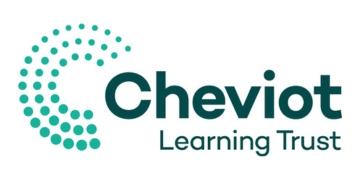It’s a lottery as to which primary schools encourage their pupils to consider a grammar school. That needs to change, says David Jesson.
The government’s education green paper has provided the basis for an enlivened debate about the purpose of grammar schools and whether more pupils should have the chance to experience this form of education.
A major proposal (8) is: “Selective schools must have in place strategies to ensure fair access – legislation should require selective schools to prioritise, or set aside places for pupils of lower income in oversubscription criteria.”
The Commons select committee took evidence on this issue from a range of academics (three with links to a previous Sutton Trust report), at its November 8 meeting. In what was a fairly comprehensive initial discussion it became clear that while there was little hard evidence that grammar school entry conferred benefits on pupils not selected, it was the process of selection itself that was of concern.
The evidence presented showed it was heavily biased towards relatively “advantaged” pupils: those with access to private tutors, or to training in test familiarity at their preparatory school, or both.
This “unequal access” was sharply illuminated in the contrasting data that while some 3,000 pupils from independent schools gained admission to grammars annually, only about 500 pupils officially designated as from “disadvantaged” backgrounds, did so.
A more radical approach is required
The second part of the select committee’s meeting took evidence from schools minister Nick Gibb.
Committee members pressed him on how this specific inequality in access could be resolved in line with the proposal of ensuring fair access. Gibb’s response was that “creating a ‘tutor-free’ selection process was the ‘holy grail’ to which the Department for Education was committed”.
Committee members remained sceptical, given recent experience with tests claiming to be tutor-free, but which had little or no effect on the recruitment of disadvantaged pupils.
Data analysed for the earlier Sutton Trust report supplemented by that from more recent years shows that amongst the 163 current grammar schools there are 36 where more than 20 per cent of pupils are recruited annually from independent/preparatory schools. Eight of the schools consistently recruited more than 30 per cent of their pupils from these institutions.
The data also shows that in four of the areas with “isolated” grammars (as opposed to fully implemented selective school systems, such as in Kent and Buckinghamshire) all recruited high proportions of entrants from the same schools.
In the light of the green paper proposals, there is a growing consensus about ensuring fairer access to grammar schools. Since, however, this is unlikely to emerge from pursuing the “holy grail” identified by Gibb, a more proactive approach is required.
At present, testing is the main selection route. In a few instances this has been moderated by setting a lower “pass-mark” for pupils from disadvantaged backgrounds.
But a more radical approach is required – and this is hinted at in proposal 7 of the paper: Existing selective schools will be required to engage in outreach activity, including teacher and pupil exchanges with local schools.
The evidence from many of the 36 schools we identified is that, apart from the large cohort of pupils entering from preparatory schools, it is also the case that it is often the same group of state primary schools that regularly provide many of their other entrants.
For reference: their recruitment of independent/preparatory school pupils averaged 25 per cent, while that of pupils eligible for free school meals from their state school feeders was just over 1 per cent.
The green paper’s (potentially) radical proposal attempts to address this by requiring existing grammars to be more active in engaging with the primary schools within their community. This should, however, not be limited to “exchanging pupils and teachers”, but, more proactively, be designed to help a wider range of potential pupils, their parents/carers and teachers see the benefits and opportunities from attending a grammar school.
David Jesson is a professor in the department of education at the University of York







You talk about the “benefits and advantages” of attending a grammar school. Shouldn’t these be available to all children not a small percentage of 10 year olds who can pass an exam on a particular day?
Grammars doing outreach has the whiff of scouting – picking the highest ability children and guiding them away from neighbouring non-selective schools.
I’ve a better idea – make grammars open their doors to children of all ability. Then their teachers can visit primaries without needing to tell the majority of children present that they’re not wanted.